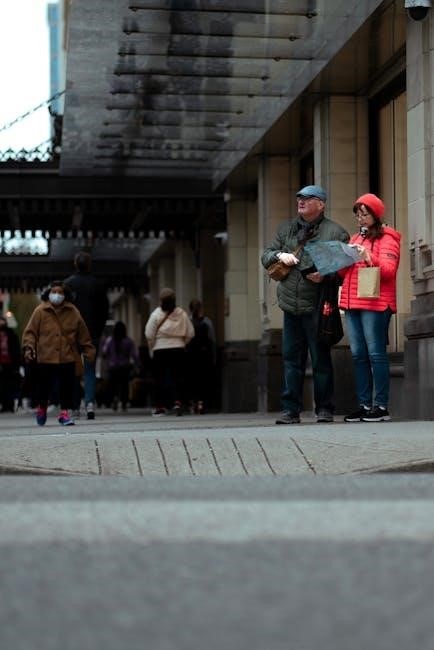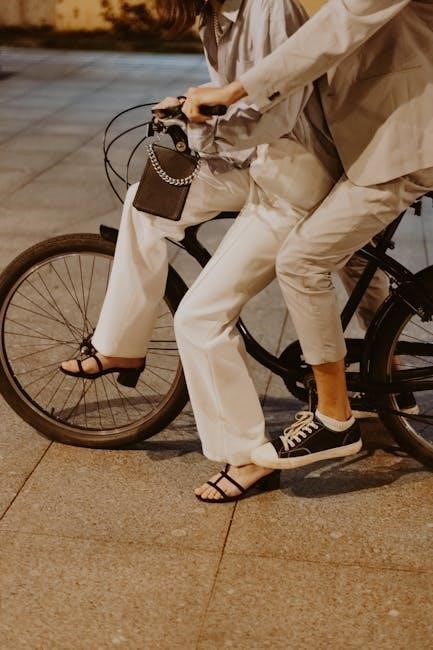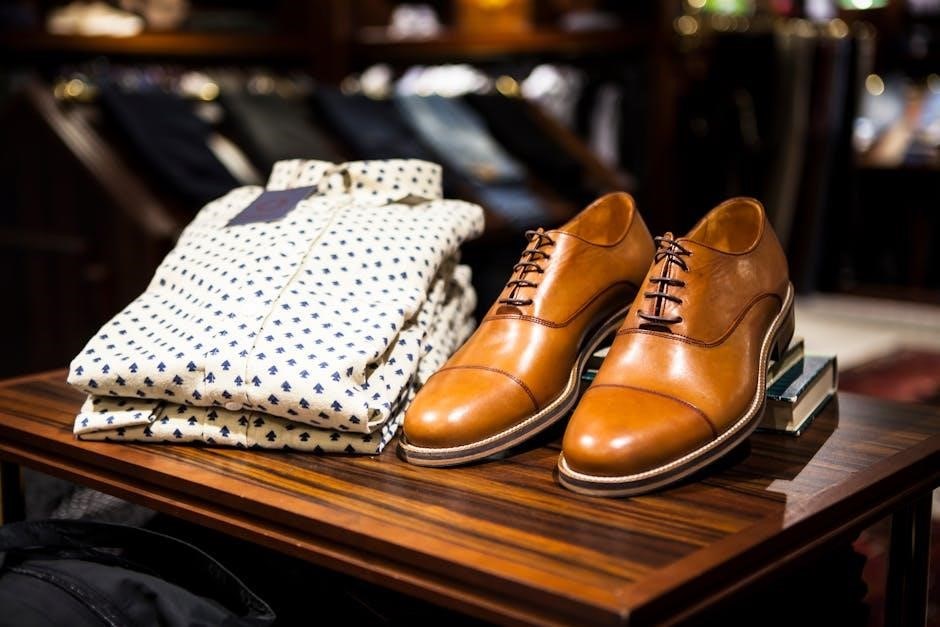Discover the ultimate guide to men’s shoes, exploring styles, comfort, and durability. Learn how the right footwear can transform your look and elevate your confidence effortlessly.
1.1 Importance of Choosing the Right Shoes
Choosing the right shoes is essential for comfort, support, and overall foot health. The right pair can enhance your daily activities, improve posture, and prevent discomfort or injuries. Foot strike patterns, such as neutral, overpronating, or supinating, play a crucial role in selecting shoes that provide adequate cushioning and support. Additionally, shoes that align with your lifestyle—whether for sports, formal events, or casual wear—ensure optimal performance and satisfaction. Poorly fitted or unsuitable shoes can lead to long-term issues like bunions or plantar fasciitis. Thus, investing in quality footwear tailored to your needs is vital for both functionality and confidence.
1.2 Overview of Popular Shoe Styles for Men
Men’s footwear offers a wide range of styles to suit every occasion. Sneakers are a popular choice for casual and athletic wear, available in various designs from sporty to fashion-forward. Casual and in-between shoes, such as loafers and boots, provide versatility for everyday use. Loafers are slip-on options perfect for formal-casual outfits, while boots, like Chelsea or ankle boots, add a rugged touch. For formal events, dress shoes like Oxfords, Derbies, and monk straps are timeless choices. Each style caters to different preferences and needs, ensuring men can find the perfect footwear to complement their lifestyle and wardrobe.

Understanding Foot Type and Gait
Identifying your foot type and gait is crucial for selecting the right shoes. Neutral, overpronating, or supinating patterns influence comfort and support needs, ensuring proper footwear fit.
2.1 Identifying Your Foot Strike Pattern (Neutral, Overpronating, Supinating)
Understanding your foot strike pattern is essential for optimal shoe selection. A neutral pattern means your foot rolls naturally, while overpronating involves excessive inward movement. Supinating is the opposite, with feet rolling outward. These patterns affect cushioning and support needs. Neutral runners can opt for versatile shoes, overpronators benefit from stability or motion control, and supinators require extra cushioning to absorb impact. Identifying your gait ensures comfort and reduces injury risk, making it a cornerstone of choosing the right footwear for both performance and daily wear.
2.2 How Gait Affects Shoe Selection
Your gait significantly influences the type of shoes you should choose. Neutral runners can opt for versatile shoes with balanced cushioning, while overpronators require stability or motion control shoes to correct excessive inward foot movement. Supinators, who roll their feet outward, need shoes with ample cushioning to absorb impact. Understanding your gait helps tailor your shoe selection to your specific needs, ensuring proper alignment and pressure distribution. This customization reduces the risk of injuries and enhances overall comfort. By aligning your footwear with your gait, you can optimize performance, whether for sports or everyday wear, and enjoy a more supportive and comfortable experience.

Popular Types of Men’s Shoes
Explore the diverse range of men’s footwear, from sleek dress shoes to casual sneakers and sturdy boots, each designed for comfort, style, and specific occasions.
3.1 Sneakers: Casual and Athletic Options
Sneakers are a versatile and popular choice for men, offering both casual and athletic versatility. Designed for comfort and performance, they feature cushioning, support, and breathable materials. Whether for running, training, or everyday wear, sneakers cater to various lifestyles. Casual styles often blend fashion with functionality, while athletic sneakers prioritize durability and responsiveness. Lightweight materials like mesh and rubber provide flexibility, making them ideal for active use. Many sneakers also embrace bold designs, allowing men to express their personal style. With endless options, from minimalist designs to vibrant colorways, sneakers are a staple in any wardrobe. Regular cleaning and proper storage can extend their lifespan, ensuring they remain a reliable choice for years.
3.2 Casual and In-Between Shoes (Loafers, Boots, etc.)
Casual and in-between shoes, such as loafers and boots, offer a perfect balance between style and comfort. Loafers are slip-on designs, ideal for casual outings or semi-formal events, while boots provide a rugged yet sophisticated look. These shoes are versatile, pairing well with jeans, chinos, or even suits. They often feature leather or suede materials, ensuring durability and a polished appearance. For everyday wear, loafers and boots are excellent choices, offering both practicality and elegance. Proper care, such as cleaning and conditioning, helps maintain their quality. By incorporating these styles into your wardrobe, you can effortlessly transition between casual and dressy occasions with confidence and style.
3.3 Dress Shoes: Oxfords, Derbies, and Monk Straps
Dress shoes are a cornerstone of men’s formal wardrobes, offering timeless elegance and sophistication. Oxfords, known for their closed lacing system, are classic choices for business attire and black-tie events. Derbies, with their open lacing, provide a slightly more relaxed yet refined option. Monk straps, featuring buckles instead of laces, add a sleek, modern touch to formal outfits. Each style is crafted from high-quality leather, ensuring durability and a polished appearance. Versatile and sophisticated, these shoes are perfect for formal events, job interviews, or special occasions. Their clean designs and precise craftsmanship make them essential for any man seeking to elevate his formal wardrobe with style and poise.

Key Features to Consider When Buying Shoes
When purchasing shoes, prioritize features like cushioning and support for comfort, and opt for high-quality materials that ensure durability and a polished appearance over time.
4.1 Cushioning and Support for Comfort
Cushioning and support are vital for ensuring comfort, especially during extended wear or physical activity. Proper cushioning absorbs shock, reducing strain on your feet and joints, while support features, such as sturdy arches and heel counters, help maintain proper foot alignment. Materials like EVA or PU midsoles provide excellent shock absorption, while technologies like air units or gel padding enhance comfort. For those with specific needs, such as flat feet or plantar fasciitis, additional support features like ortholite insoles or motion control systems can make a significant difference. Neglecting these elements can lead to discomfort, fatigue, or even long-term foot issues. Always test shoes for cushioning and support during fittings to ensure they meet your needs.
4.2 Material Quality and Durability
Material quality is a critical factor in determining the durability and comfort of men’s shoes. Premium materials, such as full-grain leather, suede, or high-performance synthetics, ensure longevity and resilience. Leather shoes, for instance, offer excellent breathability and can develop a beautiful patina over time with proper care. Synthetic materials, while often more affordable, may lack the same level of durability but can provide lightweight and water-resistant options. Durable outsoles, such as rubber or Vibram, enhance traction and withstand wear. Always consider the material’s suitability for your lifestyle—whether for formal events, casual wear, or outdoor activities. Investing in high-quality materials ensures your shoes remain comfortable and functional for years to come.

Maintenance and Care
Proper maintenance extends shoe lifespan. Clean regularly, protect materials, and store shoes in cool, dry places. Use brushes, conditioners, and waterproofing sprays to preserve quality and appearance.
5.1 Cleaning and Protecting Different Materials
Cleaning and protecting men’s shoes vary by material. For leather, use a soft brush and conditioner to maintain shine and prevent cracking. Suede requires a suede brush and protector to repel water and stains. Mesh and fabric shoes can be gently hand-washed with mild soap and air-dried. Synthetic materials often wipe clean with a damp cloth. Always apply waterproofing sprays to protect against moisture. Avoid harsh chemicals and direct sunlight, as they can damage finishes. Regular care ensures longevity and keeps shoes looking their best. Proper cleaning and protection are essential for maintaining both style and durability.
5.2 Storage Tips to Extend Shoe Lifespan
Proper storage is key to extending the life of your shoes. Use shoe trees or stuff shoes with paper to maintain their shape. Store them in a cool, dry place to avoid moisture damage. Avoid direct sunlight, as it can cause discoloration. Keep shoes in their original boxes or use cloth bags for protection. For boots, store them upright with supports to prevent bending. Avoid stacking shoes, as this can cause creasing or damage. Clean shoes before storing to prevent dirt buildup. Regularly air out shoes to prevent odors. By following these tips, you can ensure your shoes remain in excellent condition for years to come.

